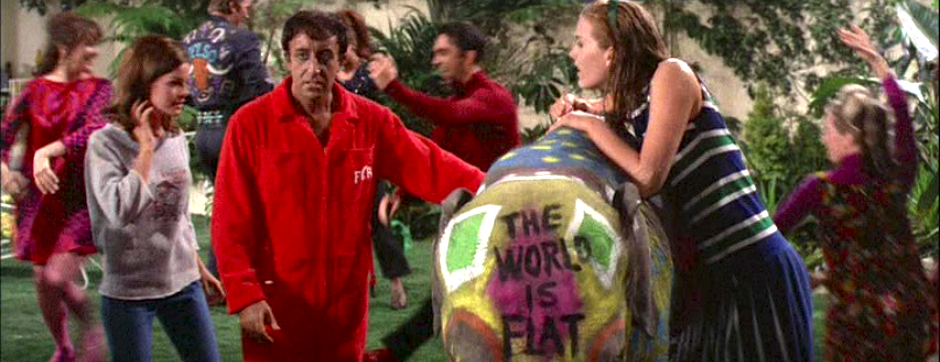The doctor watches the woman in a wide-screen TV, as it were a movie. The doctor has assembled and directed the woman’s life as a film director would with his actor. We have already seen this many times, also from Almodóvar himself: precisely in his great “Broken Embraces“. But here, in La piel que habito, The Sink I live In, Almodóvar breaks the limits and goes much deeper.
 I probably liked Embraces better, but I feel Almodóvar is going straight in a road of zen minimalism, disembracing all that is not really important to his soul searching and storytelling. His analysis of characters is compelling. All his famed humor is mostly gone; all his picaresque characters are gone (except for the Tiger, the Brazilian jolly joker whose only role is to disrupt everything and shock the viewer, and state a first brusque statement about The Mother).
I probably liked Embraces better, but I feel Almodóvar is going straight in a road of zen minimalism, disembracing all that is not really important to his soul searching and storytelling. His analysis of characters is compelling. All his famed humor is mostly gone; all his picaresque characters are gone (except for the Tiger, the Brazilian jolly joker whose only role is to disrupt everything and shock the viewer, and state a first brusque statement about The Mother).
The Mother archetype, before whom everyone, gay or not must come out of the closet. This is all Almodóvar shows in his movie. It’s a story of discovery and identity: Who am I; Man/Woman; where does the man begin and the woman ends? The lovemaking between the doctor and the new-skin woman is absolutely wonderful cinema: She can’t do it, because, is she a woman? He couldn’t do it before, because, was she a woman? How could he get in love with her, at the same time patient, abductee, lover? Aren’t there the same traits in all relationships? Aren’t we all, in a relationship, lovers and abductors/abductees?
Identity: The story is all a metaphor of self-discovery, of coming out of a closet, of acceptance of oneself. For this, the final scene is so powerful and clicked so much within me, so much I really felt …: the woman going to see her mother, and saying to her who she is. Or whom she has become. Or who she thinks she is. Or. Self acceptance comes after discovery (sometimes painfully, says Almodóvar), but to feel accepted we must proclaim our identity to our mother first. But who is the woman, in the end?
The doctor’s obsession is the obsession of love/relationship (and that of movie direction!), and all of the movie is about a story, a metaphor of lived relationships: manipulative, deceptive, personality-changing, person-changing. One is never the same within a relationship. One changes under the other’s power, always, sometimes subtly; more bluntly other times. This is the story, and I feel Almodóvar has matured quite a lot in the last years. He only sticks at essential, universal traits and trails and examines them under a light that is deep and natural and universal. Gone are the typical-Spaniard traits: this movie could be done in Ukraine, and nothing would be different.
A masterpiece, even if I a few minutes are really too many and would have been best cut out. Again, I felt so connected to this movie I couldn’t believe it. I was moved by it.
The Skin I live In is one, but changes: It may even grow harder. And the person beneath the skin also changes.
Like in the photo above: the doctor watches “his woman” and studies her. Beyond his irrational/rational obsession, beyond his role of captor, lover, doctor, he is trying to understand who is she, and who he wants her to be.




